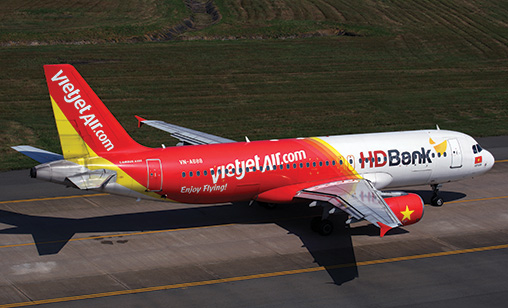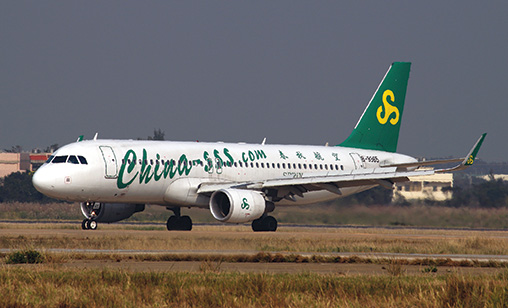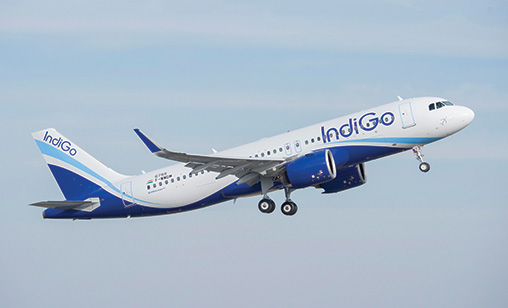Asia-Pacific Commercial Aviation Year in Review
Mixed fortunes in Asia’s fast growing airline markets
December 1st 2019
The return to service of the 737 MAX may provide accelerated capacity growth in the region but also resulting yield declines at Chinese and Indian airlines who have MAXs grounded, ordered or both. Read More »
In Vietnam, fast growth will continue for LCC, VietJet, and new hybrid carrier, Bamboo Airways. The two privately held airlines are eclipsing Vietnam Airlines and its low-cost joint venture subsidiary, Jetstar Pacific.
 |
The Qantas Group, whose Jetstar unit holds 30% of Jetstar Pacific, said in a November investor presentation Vietnam has “several aggressive, well-funded entrants that are unconstrained by need to protect legacy businesses”. Qantas said VietJet, with an order backlog of 350 aircraft, and Bamboo, which aims to triple in size, have a “land grab mentality”.
Vinpearl Air, owned by Vingroup, is planning to be the fifth major airline in Vietnam from next year. Like Bamboo owner FLC, Vingroup is a conglomerate with a large real estate portfolio.
The government is closely scrutinising a sixth proposed carrier, Kite Air. Regulators are concerned about over-capacity in the market and forecast losses that could push working capital below minimum requirements.
Unlike Vietnam, major entrants into the market in China and India are unlikely. A year ago, consolidation was a common topic in Indian aviation, but the exit of Jet Airways earlier this year has improved market conditions.
Arguments for consolidation are gaining ground in China, where the regulator is scrutinising the performance of numerous domestic airlines launched in recent years as well as medium-sized airlines now flying long-haul. Some domestic airlines have grown quickly. Qingdao Airlines, with 24 A320s, is a case in point, but nationally they are small players in percentage terms.
Medium-sized airlines like Xiamen Airlines and Sichuan Airlines have large narrow-body fleets, but their long-haul flying is sub-scale. Most Mainland domestic capacity is affiliated with one of the big four airline groups, Air China, China Eastern Airlines, China Southern Airlines and the Hainan Airlines Group. There could be pressure on their bottom lines if capacity imbalances arise from fleets expanding faster than the slowing economy can absorb.
 |
Most of the domestic Chinese market is held by LCCs. In 2020, China will introduce legislation favourable to budget carriers to assist their expansion. Existing legislation has made unbundling and ancillary revenue opportunities difficult to implement even for full-service airlines.
China’s low LCC penetration rate contrasts with India and Vietnam. The biggest LCCs in India and Vietnam, IndiGo and VietJet, respectively, are home-grown and not foreign brand joint ventures. The same is true for China’s largest LCC, Spring Airlines, but Spring has routinely been held back in favour of state-owned carriers. In contrast, VietJet and IndiGo have been allowed to flourish.
Spring and VietJet have overseas franchises, Spring Airlines Japan and Thai VietJet, but they are small and are not developing into major operators in their markets. IndiGo is sticking to its core operations, but a recently agreed code-share with Qatar Airways could result in the Delhi-headquartered LCC increasing flights to Doha. SpiceJet is partnering with Emirates and VietJet with Japan Airlines.
Bamboo Airways will need to enter the partnership arena, especially for its planned long-haul network to be serviced by 787s. Possible destinations are Prague, Melbourne and unspecified points in the U.S.
VietJet and IndiGo have studied acquisition of wide-bodies, but have not committed to purchases. Some destinations may be accessible with long-range narrow-bodies: northern Japan and Australia for VietJet, Europe and coastal China for IndiGo. Vistara has a partnership portfolio, including British Airways and Japan Airlines, which could help the airline if it flies to Britain or Japan.
China Southern Airlines (CSA) is re-establishing its partnership platform after exiting SkyTeam so it could be independent of any major alliance. Its new partners are mostly from oneworld. Two of them, American Airlines and Qatar Airways, have made small investments in CSA.
Air China’s major partnership is a joint venture with Lufthansa. China Eastern Airlines has the strongest partnership portfolio led by Air France-KLM, Delta Air Lines and and Qantas.
As for outward investment, Vietnam Airlines has equity of 49% in Cambodian flag carrier, Angkor Air, but it is contemplating a sale of the holding because of intense competition from new market entrants mostly backed by investors in China.
 |
India’s SpiceJet is considering an airline partnership with the Ras al Khaimah (RAK) emirate in the United Arab Emirates. The Mumbai-based LCC has not decided if the airline would use the SpiceJet brand or a new one. There are doubts about the viability of the venture, evidenced by RAK’s numerous attempts to foster a local aviation sector, including failed RAK Airways.
In China, HNA has sold its share in South Africa’s Comair, which operates under the British Airways brand. Most of HNA’s overseas airline investments were not planned to have direct synergies with HNA’s core Greater China airline business. One exception was its investment in Virgin Australia (VA), which it has retained to date. Another VA stakeholder, China’s Nanshan group, owns part of Qingdao Airlines.
Airlines from Vietnam face few traffic rights restrictions, while India has some short-haul restrictions. Regulators have yet to clear AirAsia India for international flights, but progress to approval is not only a matter of traffic rights for the LCC.
Chinese airlines have few constraints for short-haul flights, but many restrictions for key long-haul markets like the U.S. France is adding traffic rights, but only gradually. Demand is outstripping entitlements.
For foreign airlines traffic rights are not a common restriction for wanting to fly to Vietnam, but there are shortages for airlines wanting to expand into India and China. India’s most constrained markets tend to be intermediary hubs.
These are typically regional neighbours like the Gulf States and Singapore, but also Germany. In China the reverse situation applies. Short-haul markets are mostly open while long-haul markets have constraints.
China used to have restricted traffic rights when foreign airlines dominated international flying. But Chinese airlines have reversed this situation in many key markets including to the U.S. Vietnam could experience a similar situation and perhaps one day India.
This year, Beijing Daxing airport and Shanghai Pudong’s satellite terminal opened. In 2020, Chengdu will have a second airport in operation. Mumbai’s second airport, delayed from opening in 2020, is expected to open its doors in 2023.